


|

|
Update on Sligo Creek's Reforestation Efforts in 2006 |
Re-establishing riparian tree buffers is an important element of the Sligo Creek watershed restoration effort. Indiscriminate increases in hard surfaces in our watershed over the past several decades (over 35% of the watershed surfaces has a hard impervious cover), however, have resulted in eroding soil conditions in the riparian buffer zone during floods. Because of the impairment of ground water recharge throughout the watershed, during periods of moderate drought the soil quickly becomes desiccated. The overabundance of white tailed deer and invasive plants (from all the edge forest habitat, created by development, where white tail deer and invasive plants thrive) also contribute to the difficulties we are facing in re-establishing our riparian buffers. It is clear that without long-term vigilance and intervention, these reforestation efforts will fail.
2006 clearly showed why re-establishing riparian tree buffers is difficult in a degraded a watershed. A year long drought (starting in August 2005) stressed the trees and shrubs we have planted. Flooding from the June 25 rain storms damaged some of the riparian reforestation sites.
After several dry weeks late winter, the soils at our reforestation sites started to go dry. It was clear that the riparian trees at the Forest Glen Reforestation site were in trouble when the ponds next to the reforestation site started to dry up in March. The trees and shrubs, planted in October 2005, did not yet have the deep root systems. The Parks Staff also does not have access to any watering trucks. A lesson learned is that the Parks need a watering truck or two and Parks' commitment to planting follow-up.
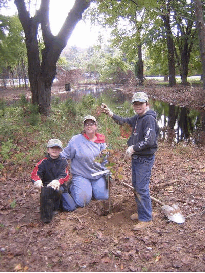
|
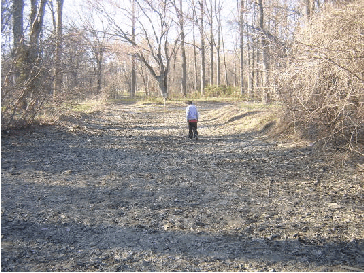
|
On June 25, 2006 heavy rains falling on impervious surfaces throughout the watershed quickly led to Sligo Creek overflowing its banks. With little of the rain water being intercepted by green infrastructure or soaking into the ground, the runoff rushed into the creek all at once rather than entering the creek slowly over an extended period of time. To make matters worse, the metal cages used to protect the saplings from deer were knocked down by the rushing flood waters. Instead of protecting the saplings, the metal cages pinned many of the saplings on their sides. The soil around many of the newly planted trees and shrubs was also washed away leaving tree and shrub root balls exposed. The fresh mulch that was recently placed around all the trees at the University Blvd. Reforestation site was all washed away. Another lesson learned is that the cages are great protection against deer browsing, but must be monitored to ensure they are still standing. The use of metal as opposed to wood stakes might help since the wood stakes rot fairly quickly. The metal stakes could be reused for further reforestation efforts as each one matures, thereby decreasing the additional cost over time (wood stakes need to be bought new for each planting.)
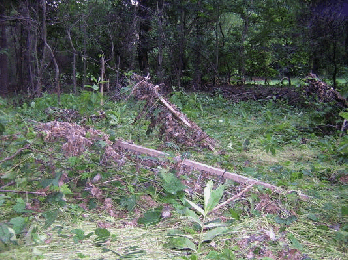
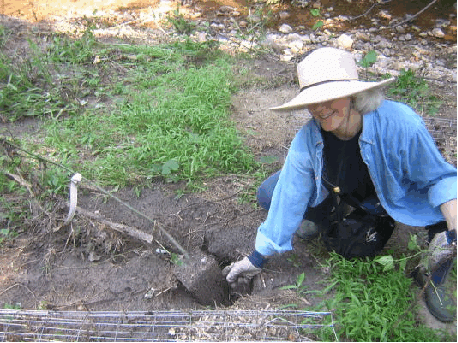
On April 2006, COG, the Parks, Friends of Sligo Creek, and Neighbors of Northwest Branch participated in a reforestation project in the Headwaters of Sligo Creek off Ladd Street. 100 trees were planted. The site was adopted by Friends of Sligo Creek members who lived nearby. Most of the invasive vines that were growing nearby were removed before the planting day. During the dry weeks over the summer, the trees were watered by the members who adopted the site. This watering was important since the root system did not have time to establish themselves. By fall the trees looked healthy, except a few that had not been caged and were demolished by deer browsing.
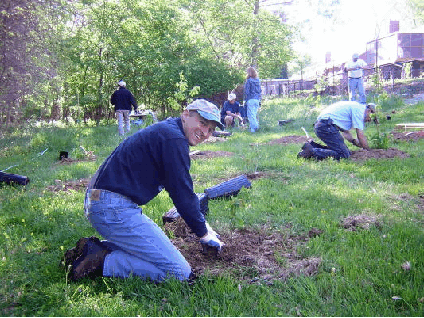
On July 3, FoSC volunteers conducted a tree rescue at the University Blvd. and Forest Glen reforestation sites after the June 25 flood. Many of the trees were knocked down. Most of the metal cage deer protection either been knocked down or washed away.

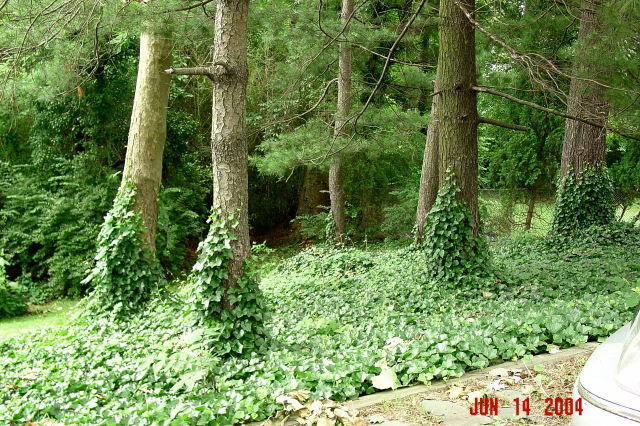
If we are ever going to be successful in restoring our forest and tree canopies in our urban watersheds, we will not be able to plant the trees and forget them. The reforestation sites need to be regularly monitored and maintained. Reforestation efforts should also be part of a comprehensive watershed restoration that includes addressing stormwater runoff with vegetated infiltration techniques. Though restoring riparian buffers is critical to restoring the health of our streams and waterways, it can not be done in isolation of addressing the other ills of our degraded watershed – stormwater runoff, invasive plants and deer management.